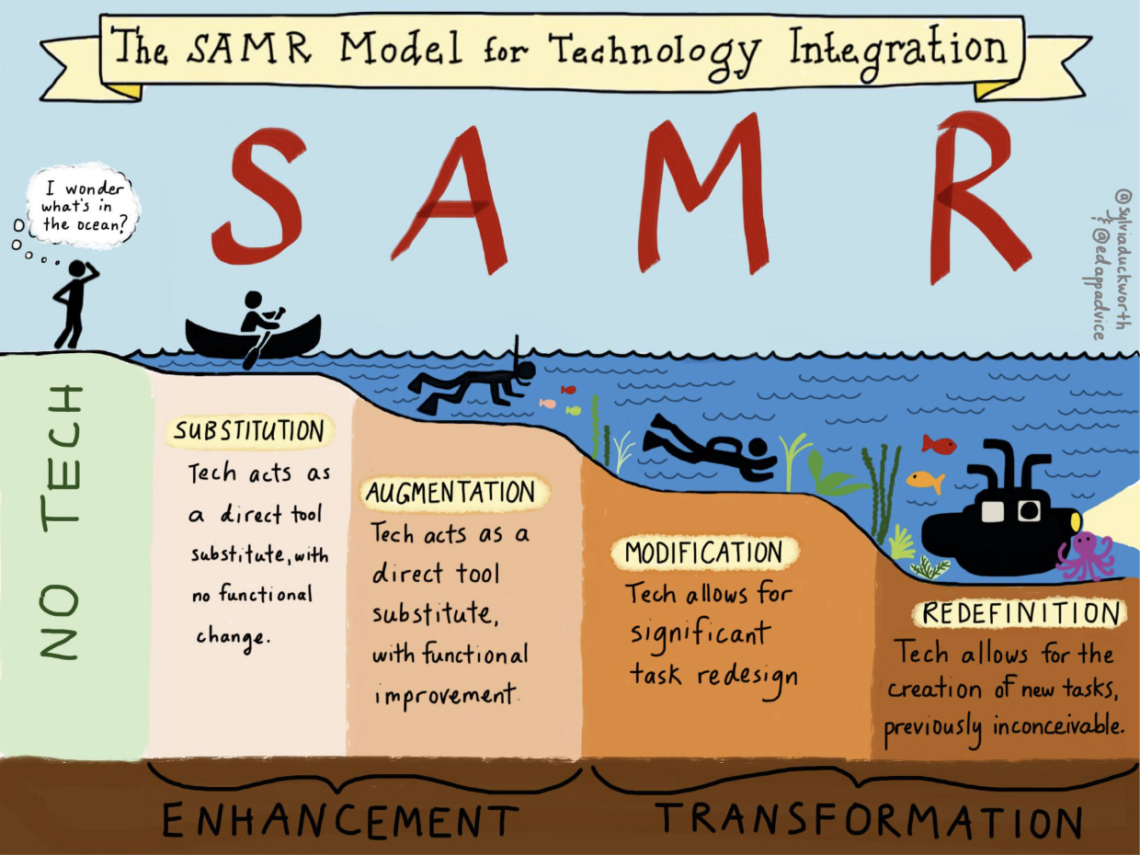Technology is a virtue! The SAMR model was something I had never heard of before this class. It’s noteworthy in considering the affects of technology on classroom learning and how we, as educators, use technology in a variety of ways. One example I likened the model to was music and guitar. I’m a guitar player myself so I thought about how evolutions in guitars and technology have affected the way we play, listen, and share our music.
If we think back to the image we looked at in class…

…I thought of how you could look at guitars as a way of describing the different stages of the model. In this example, “no tech” would perhaps signify no guitar, maybe someone just singing without any accompaniment. As a substitution, we could see someone playing an acoustic guitar with no vocals. Sounds and music are still being made but (assuming the guitar is in tune), it’s possible to make more articulate music than with just your voice alone. One could argue this is a functional change and therefore augmentation, but bear with me here. I’ll define an augmentation in regards to guitar playing as an electric guitar, as opposed to acoustic. In this, I am thinking about how now the music can be amplified to reach a wider audience. For modification, imagine a program that connects a guitar to a computer, that allows music to be saved, distributed, perfected, etc. This way the audience for music becomes even greater. Moving into redefinition, there are programs (even GarageBand) that allow the user to create guitar music without ever playing a guitar, or even without ever knowing how to strum properly. These programs can enhance musical endeavours through ease of use. It’s interesting to consider how moving away from the roots of music can be seen positively or negatively. Sure, the more people who hear the music, the better; but what of those people who say that you’re losing the heart and soul by producing music through a computer? I think there’s something to be said for both arguments and these discussions are important to have moving forward especially when we draw connections to technology and education.
By the same token, is learning still achieved best in classroom settings? Online? A mixture of both? I think it greatly depends on the context: subject matter, age, and other factors all play a role in these learning outcomes. We should be acknowledging the origins of educative frameworks such as lectures, tests, etc. while still exploring new and innovative ways to educate our students in 2023. What are the drawbacks of our traditional assessment-based teaching practices? What are the benefits? Vice versa, what are the limitations and benefits of technologically-based educative practices? Efficiency is important, but not to the detriment of unexplored curiosity.
Here’s a helpful SAMR link: https://vibe.us/blog/samr-model/#:~:text=The%20SAMR%20Model%20categorizes%20online,conventional%20materials%20with%20digital%20versions%2C
